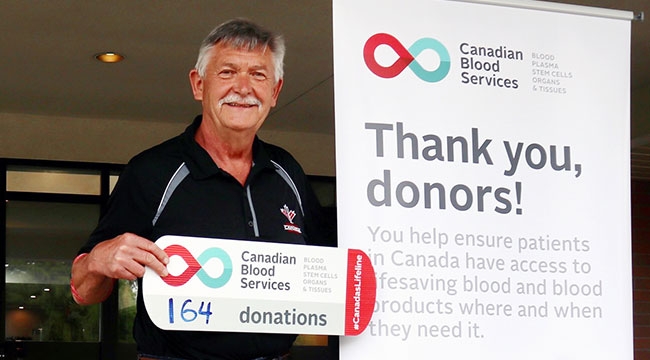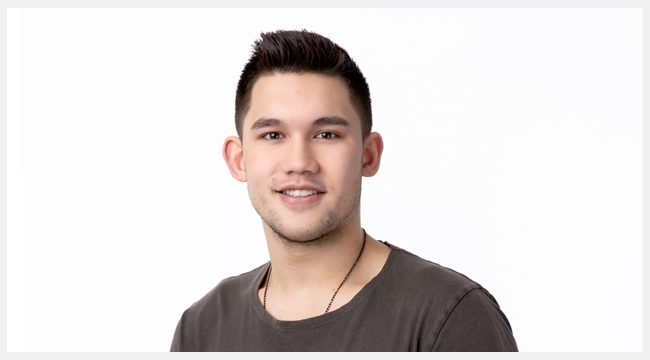Making more matches, faster: How financial gifts give hope to patients waiting for stem cell transplants
Imagine your sibling, parent, or child was sick with a life-threatening illness and there was nothing you could do to save them.
That’s the devastating situation Adrienne San Juan and her family ended up in, when her youngest sister Roshlind was diagnosed at just 16 years old with – not one – but two rare and life-threatening blood diseases and needed a lifesaving stem cell transplant.
Right away, the entire family got tested to see if anyone was a match. While her parents were ruled out immediately, Adrienne and her other sister Kirsten waited anxiously for weeks to find out if either one of them could donate their stem cells to help save Roshlind.
Adrienne said that the time spent waiting was “gut-wrenching”. “[Kirsten and I] tried to stay hopeful by thinking that even if neither of us ended up being a match for Roshlind, we’d at least be able to find an unrelated donor match quickly.”
These hopes were quickly dashed, however, when Adrienne began doing research and discovered that Roshlind’s odds of finding an unrelated donor were bleak.
Even with millions of donors on registries worldwide, a perfect stem cell match is not always available. The more genetically diverse someone’s background is, the more difficult it can be to find a matching donor. Unfortunately, donors from diverse ethnic backgrounds are underrepresented on Canada’s national stem cell registry.
Only 31 percent of Canada’s potential stem cell donors are currently non-Caucasian, with Indigenous Canadians, African Canadians and those of Asian descent being particularly underrepresented.
As a young Filipina woman, Roshlind faced a greater challenge than most. She needed a 10/10 stem cell match, which essentially meant her donor would most likely need to come from the same ethnic community. However, only about one per cent of registered stem cell donors are of Filipino descent.
“When I realized the stats of finding a match, that’s when the panic really started to sink in,” said Adrienne.
She eventually learned the devastating news that no one in their immediate family was a match for Roshlind, and they would need to begin the difficult search for an unrelated donor.
“It was heartbreaking to know we couldn’t be the ones to save her,” said Adrienne.
Roshlind’s story is not an isolated one. Every year, hundreds of Canadian patients need life-saving stem cell transplants to help treat different diseases and disorders – primarily blood cancers and blood disorders – and most need to rely on the generosity of complete strangers.
What can make the process even more challenging for patients and their families is that it currently takes between 20-30 days just to find out if a stem cell registrant is a match for a patient.
For individuals with diseases as serious and life-threatening as Roshlind’s, every single day – every single hour – that goes by without a critical stem cell transplant could literally mean the difference between life and death. That’s why Canadian Blood Services continuously looks to invest in education and recruitment initiatives and innovative new technologies, to help make more matches – and more transplants – happen faster.
Financial donors can help save more lives and ease the pain of long wait times for families who are still looking for a match for their loved one.
Thankfully, after a five-month search, Roshlind received her lifesaving transplant from an anonymous donor in February 2019.
Although she has continued to face some challenges on her journey to health, Roshlind recently celebrated her one-year stem cell anniversary and said she dreams of one day meeting her donor to personally thank him or her for saving her life.
“There is no way to fully express my gratitude to donors of any kind – they are real-life superheroes,” said Roshlind. “When I think of my stem cell donor I get emotional, because this person gave me a second chance at life. Not a day goes by that I don’t feel grateful to donors and grateful to be alive.”
Roshlind was one of the fortunate ones – but there still so many families out there who haven’t been as lucky in their search to find a match for their sibling, parent, or child.
These families need your help.
If you are 17-35 and meet the health requirements, please consider signing up to join Canadian Blood Services Stem Cell Registry. You can also help save lives by making a financial contribution to help support recruitment and innovation initiatives at give.blood.ca/roshlind.
No matter how you choose to give, your support will help ensure that lifesaving stem cells will be available for patients like Roshlind where and when they need them – and no matter who they are.



